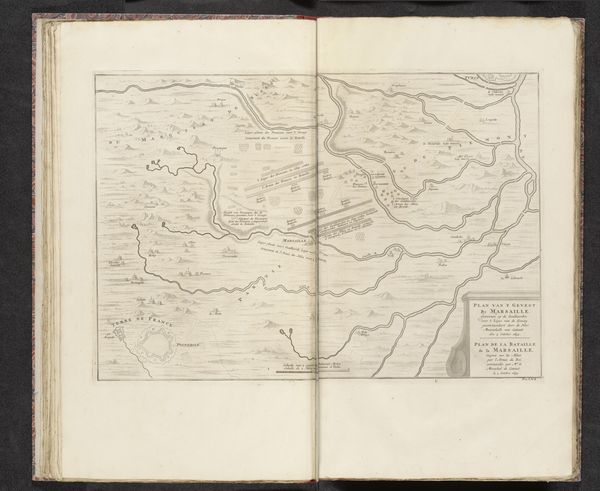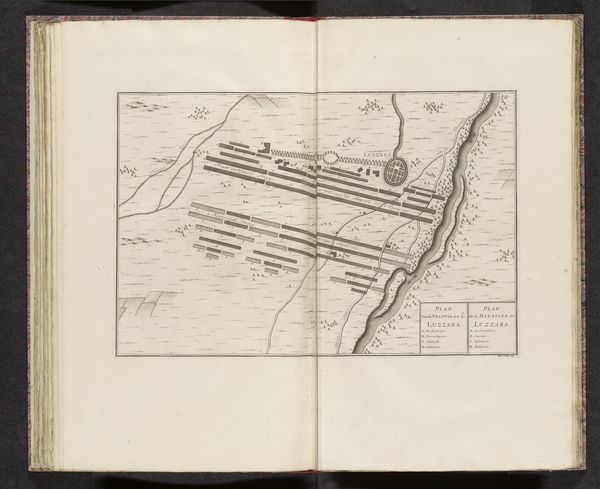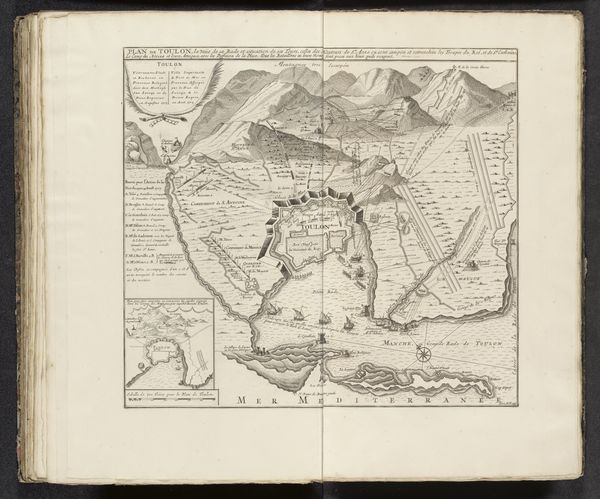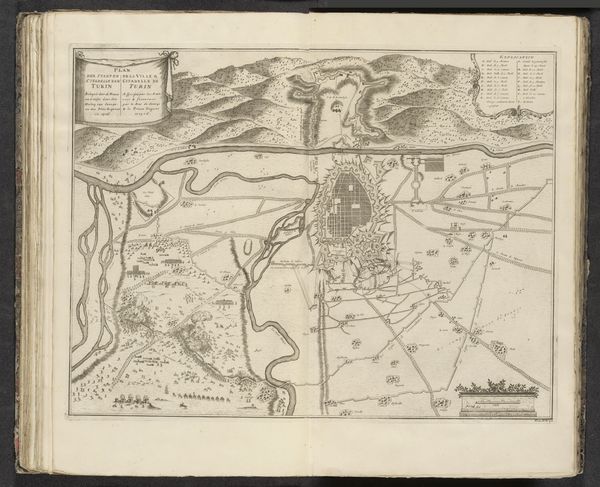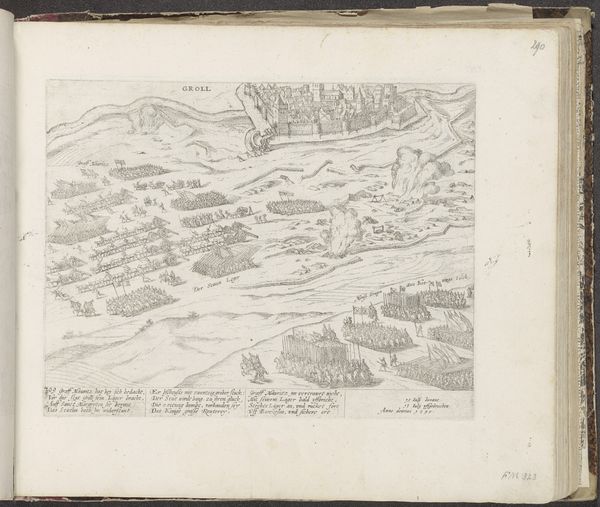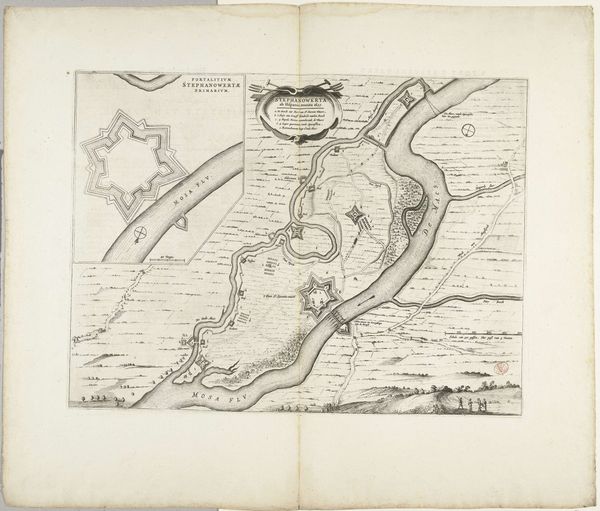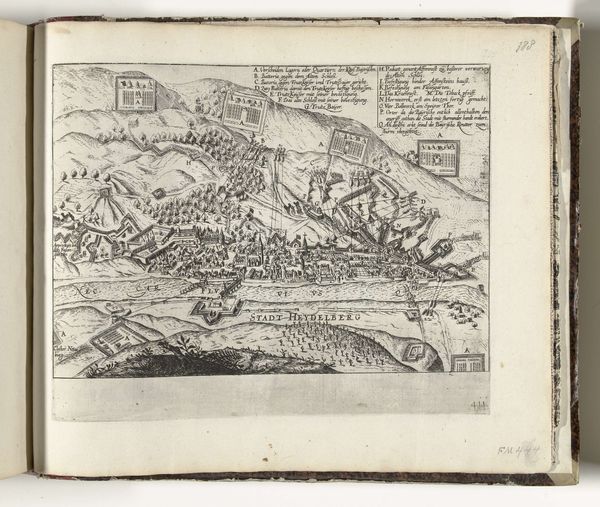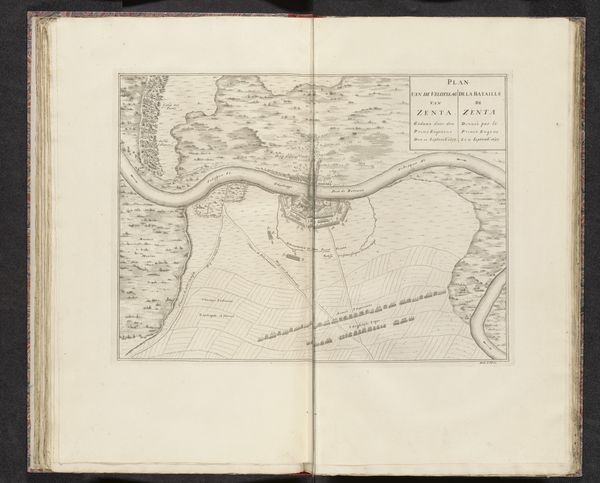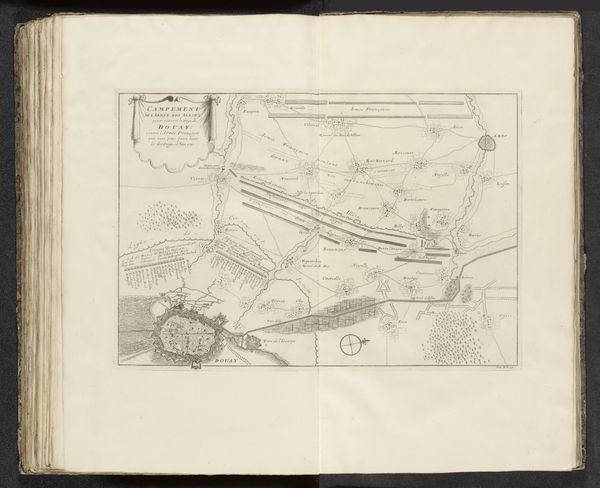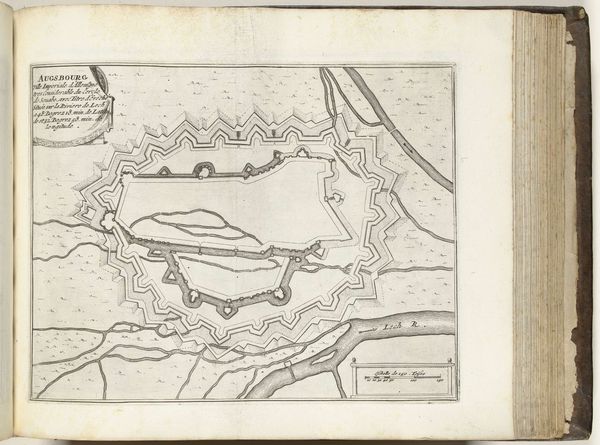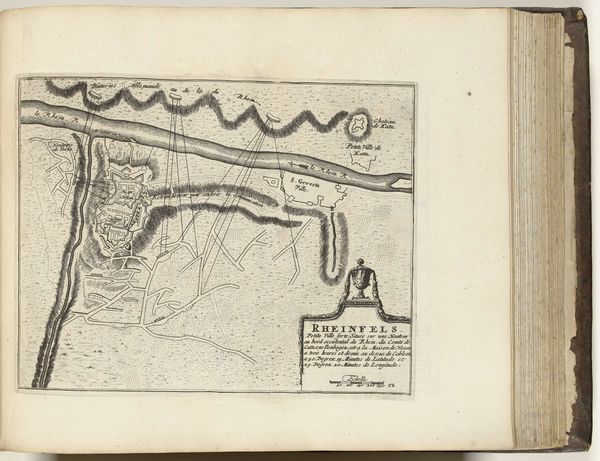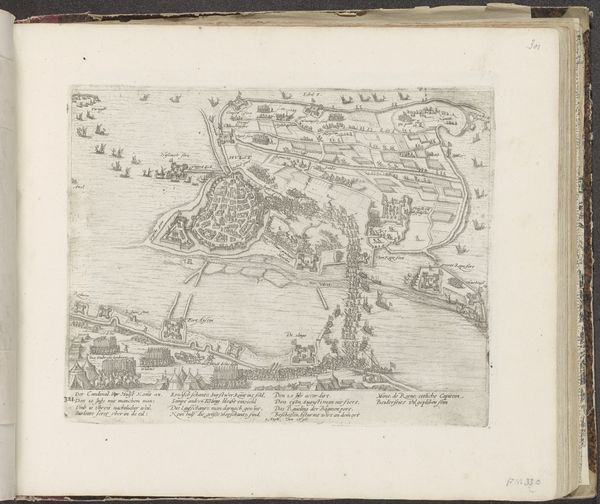
drawing, paper, ink, engraving
#
drawing
#
aged paper
#
toned paper
#
baroque
#
sketch book
#
landscape
#
paper
#
personal sketchbook
#
ink
#
geometric
#
pen-ink sketch
#
ink colored
#
line
#
pen work
#
sketchbook drawing
#
cityscape
#
storyboard and sketchbook work
#
sketchbook art
#
engraving
Dimensions: height 331 mm, width 495 mm
Copyright: Rijks Museum: Open Domain
Editor: So this is "Kaart van de slag bij Cassano, 1705," made between 1705 and 1729 by an anonymous artist, using ink and engraving on paper. It looks like a bird's eye view of a battlefield, almost like a game board. What do you see when you look at this piece? Curator: What strikes me is how this map isn't just about geography. The materials themselves—the ink, the paper, the engraving—speak to the meticulous process of documentation and dissemination of military knowledge. It’s about the power embedded in representing, controlling, and understanding space through material means. Who was intended to consume this image and what social practices or circumstances produced this particular visual outcome? Editor: That's interesting. It feels very detached and precise, but also incredibly labor-intensive. Like someone spent hours carefully etching each line. Curator: Exactly. And consider the engraver’s role. This wasn't just an artistic rendering; it was technical labor, a means of translating strategic information. The choice of paper, the quality of the ink—these were all factors in ensuring the map's legibility and longevity, signifying its importance and who might have commissioned it. Editor: So it's less about the battle itself, and more about how information about it was produced and shared? Curator: Precisely. Look at the repetitive nature of the lines used to denote troops and fortifications. This speaks to a form of mass production of imagery, making such tactical insights broadly available across different groups. It underscores art’s capacity as material for social circulation. How was the labor divided in this period? Editor: I hadn't considered it that way. Seeing it as a product of specific materials and labor makes me rethink what "art" even means in this context. Curator: Indeed. And by understanding these processes, we can better understand the artwork's value in its time, and perhaps even our own.
Comments
No comments
Be the first to comment and join the conversation on the ultimate creative platform.
